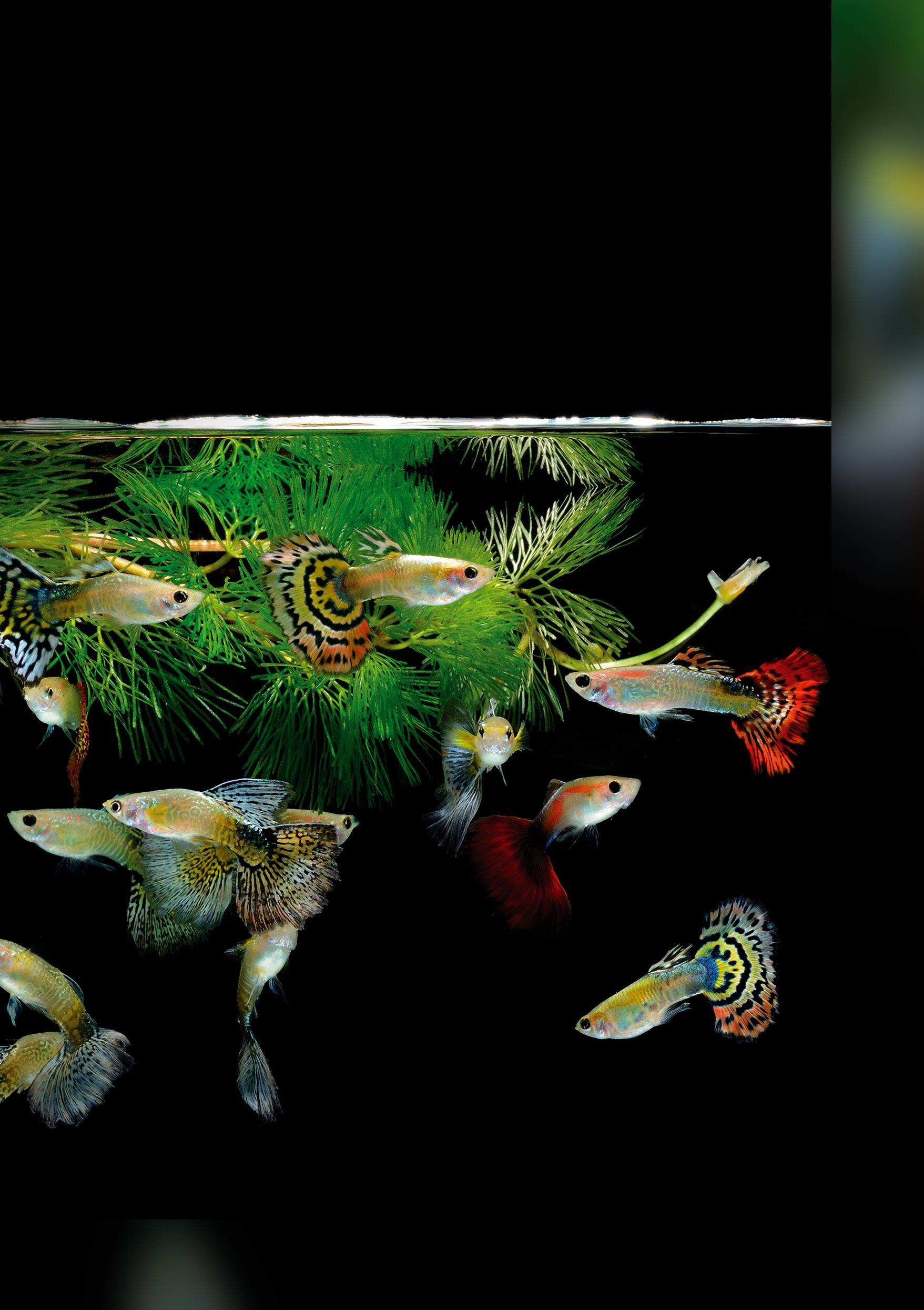
Everything you need to know to set up an aquarium
We’ve been crafting captivating aquariums for over 45 years for guppies
ENG
Each aquarium is a microcosm within glass walls, governed by its own strict laws. It’s a realm akin to the wonderland Alice stumbled into, yet unlike a mere fairy tale, it’s one you can bring into your very home. With just a grasp of your inhabitants’ needs, caring for them becomes as simple as tending to a beloved dog or cat.
We offer all the essential insights to help you establish your inaugural aquarium, whether it’s for bettas, goldfish, or guppies. We’re confident this hobby will enchant you, beckoning you into its depths. For further guidance, delve into our blog at tropicaledu.pl. With the help of QR codes you will quickly get to the recommended materials.
Share aquarium passion with us!
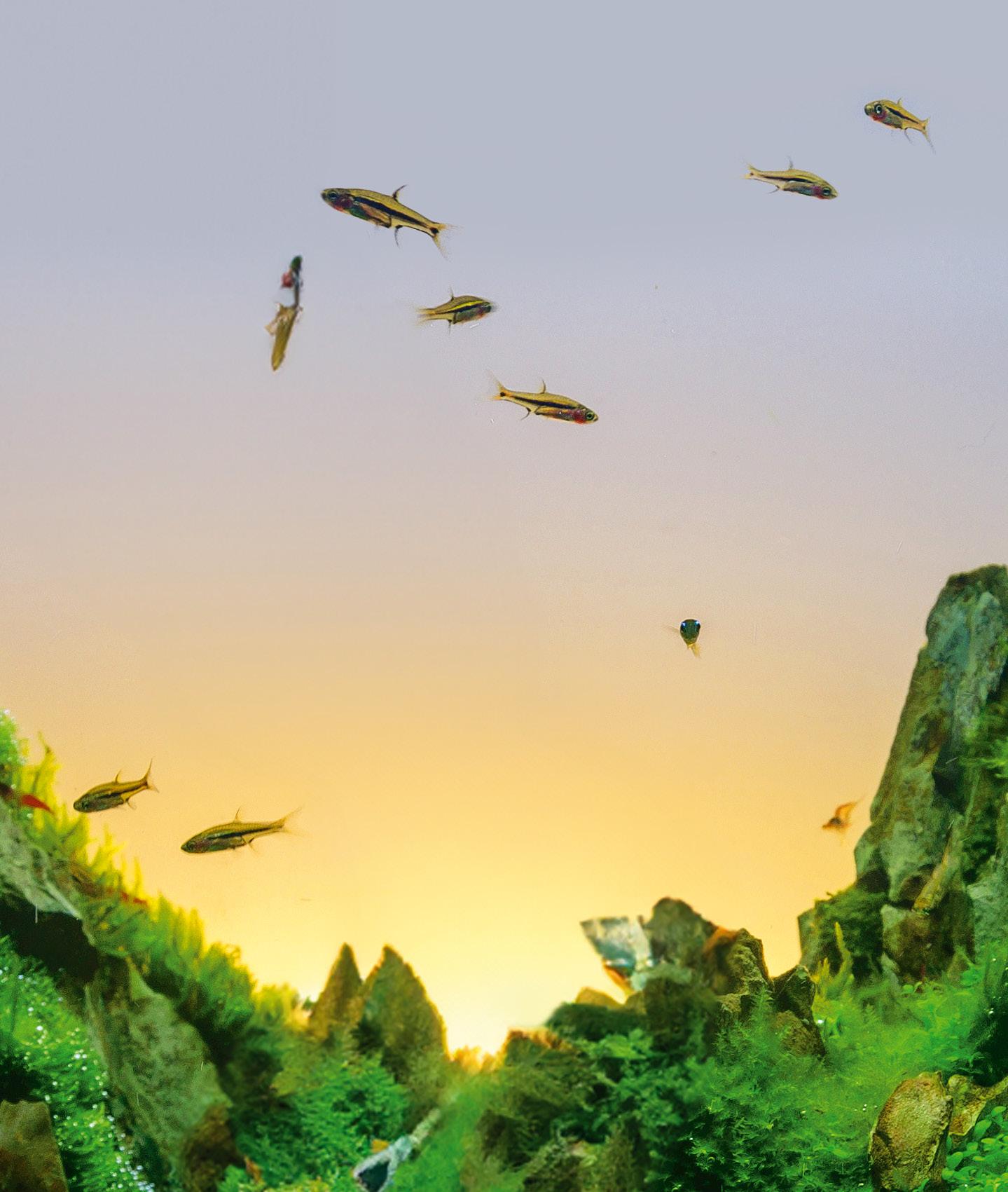
How to set up an aquarium?
The very process of setting up an aquarium is not difficult. Just buy a tank, a suitable filter, heater and lighting. Choose the substrate and aquatic plants. Flood the tank with water and turn on the equipment.
Remember, however, that an aquarium filled with fresh tap water and a new substrate and a filter with clean filter cartridges is not a suitable place for fish to live. In order for it to become a safe home, it must first be colonized by bacteria and other microorganisms. The period during which the aquarium is colonized by bacteria is called maturation.
Aquarium maturation is a process that occurs in any new tank, and its proper handling at this stage can help to avoid many serious problems.
What do you need to know about nitrification?
Nitrification plays a major role in the maturation of the tank. This is a biochemical process carried out by bacteria that enables fish and plants to live in home aquariums.
Nitrifying bacteria are responsible for the transformation of nitrogenous compounds in the aquarium. The source of these compounds is organic matter (feces of fish, crustaceans, snails, food scraps, parts of aquatic plants). Its decomposition by bacteria and other microorganisms produces ammonium ions (NH4+) among other things.
CAUTION! As the pH of the water increases (> 7 pH), ammonium ions turn into ammonia (NH3 ), which is toxic to fish.
dead leaves
THE MOST TOXIC
f ish waste excess food nitrites nitrates plants
amonium ions
water changes ammonia
MORE TOXIC
Safe concentrations
NH3 < 0.2 mg/l
NO2 - < 0.3 mg/l
NO3 - < 30 mg/l
LESS TOXIC
At this point, nitrifying bacteria get to work, oxidizing ammonium nitrogen (NH4+/NH 3) to nitrite (NO 2 - ), which in turn is oxidized to nitrate (NO3 - ). Remember that nitrites (NO 2 - ), like ammonia, are highly toxic to fish. Only nitrates (NO3 - ) are relatively safe, and their excess can be removed from the aquarium by regular water changes. To maximize the capacity of nitrifying bacteria, biological filters are used to purify water. These can be both internal filters (in smaller aquariums) and bucket filters. The filter media used in them (sponges and/or ceramics) provide a substrate on which bacteria settle. Remember that the biological filter should be cleaned very rarely, so as not to disturb the beneficial bacteria.
When can you let fish into a new aquarium?
Nitrifying bacteria develop slowly in the aquarium. Therefore, if you let the fish in during the first weeks of the aquarium’s operation, you will notice high concentrations of ammonium/ammonia ions (NH4+/NH3) and nitrite (NO 2 - ). As you already know, they are toxic to fish. As a result, your new fish will be in great danger. A maturing aquarium should never have a full scheduled fish stocking, as fish are the main source of nitrogen compounds. The more fish in an aquarium, the more ingredients that produce toxic compounds. In a mature tank aquarium tests will only show the presence of nitrates.
Learn more:
Water change

Biological filtration

How to carry out aquarium maturation?
1 Place the substrate, decorations and technical equipment in the aquarium. You can plant the plants before filling the aquarium with water. However, remember to keep them moist so they don’t dry out. You can also plant them after partially filling the aquarium with water.
2 Pour the water and start the technical equipment (filter, heater, lighting).
3 Use Tropical Supreme water conditioner. It will remove chlorine and bind heavy metals. In addition, it will make the fresh water more friendly to future aquarium inhabitants, including the bacteria you will introduce in the next step.
4 After a few minutes, pour Tropical Bacto-Active and Tropical Nitri-Active with bacteria into the aquarium. They complement each other. One accelerates the decomposition of organic matter and colonization of the aquarium by nitrifying bacteria, while the other introduces nitrifying bacteria. Ensure good oxygenation of the water by using a diffuser in the filter or an additional aerator.
5 Remember that there is no organic matter in the new aquarium. You have to introduce it into the tank. You can use a bit of fish food for this. You can also introduce ornamental snails in. Aquatic plants are also a good source of organic matter. Before they acclimate to the aquarium, they usually lose their leaves. There will always be something that dies, detaches, and eventually, if you don’t remove these remains, it will decay.
6 Buy aquarium tests. At this stage, Tropical 6 in 1 strip test will be sufficient. When the test ceases to show the presence of nitrite (NO 2 - ), and at the same time nitrate (NO3 - ) appears, it will mean that full nitrification of nitrogenous compounds in the aquarium is taking place.
7 This is the moment when you can let the fish into the tank. If you let all of them in, be sure to monitor the concentration of nitrogen compounds and do regular water changes (20-30%). Treat the water after each change and add products with bacteria. Initially, do not feed the fish too much. The system may not be ready for such a load of feces and urea. Control water parameters with Tropical 6 in1 Test strip test or drop tests: Tropical NO 2 - Test, Tropical NO 3 - Test. Learn more: Maturation of the aquarium
a few minutes


Water treatment products


SUPREME
Water conditioner with aloe
superefficient water treatment product with aloe extract for quick conditioning raw tap water intended for aquarium use recommended when changing water and starting new tanks quickly neutralizes toxic chlorine, which is dangerous for aquarium fish, and heavy metal salts protects fish from the aggressive effects of raw tap water thanks to aloe extract, it has an anti-stress effect, soothes abrasions and accelerates the regeneration of damaged epidermis works immediately, hence proves useful when it is necessary to quickly change large volumes of water
TREATMENT: 1 ml (approx. 25 drops) / 50 l of raw tap water. Always use in a newly started tank and after each partial or complete water change.
INSTRUCTIONS: Apply other products only after a few minutes.
TROPICAL BACTO-ACTIVE
Water treatment product with bacteria for freshwater aquarium. It removes organic waste and accelerates aquarium maturation

it contains selected live cultures of biologically active bacteria that break down organic matter accumulated in the substrate and filters, initiating nitrogen cycle the ammonium ions released in this process accelerate the maturation of the aquarium, stimulating the development of nitrifying bacteria recommended for new tanks with treated water, mature aquaria after changing water, filters or following medical treatment of the fish if used regularly, it accelerates the decomposition of organic matter, removes water turbidity and unpleasant odors, and together with Tropical Nitri-Active, maintains the biological balance in the aquarium

TREATMENT: treat raw tap water with Supreme and one of the following products: Blacklarin or Shrimp Guard. Immature tanks – 5 ml / 75 l of water once a week, after 3 weeks dose as in mature tanks. Mature tanks – 5 ml / 45 l of water once a month.
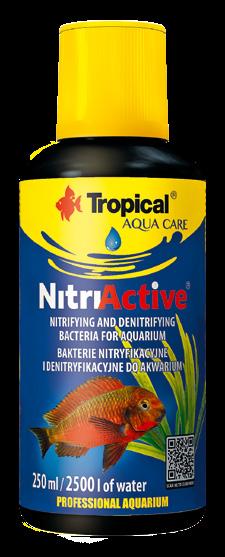
TROPICAL NITRI-ACTIVE
Nitrifying and denitrifying bacteria for aquarium
a product with selected strains of nitrifying and denitrifying bacteria it accelerates the maturation and stabilization of the aquarium by quickly activating the nitrogen cycle
the unique combination of aerobic bacteria and facultative anaerobes actively supports the functioning of the aquarium under both aerobic and anaerobic conditions by settling the filters and the substrate the product is intended for use in young and mature tanks if used regularly, it ensures biological balance and supports self-cleaning processes in an aquarium
TREATMENT: treat raw tap water with Supreme and one of the following products: Blacklarin or Shrimp Guard. Setting up a new aquarium and following a medical treatment: 20 ml / 100 l of water once a week for 3 weeks, mature tanks: 10 ml / 100 l of water once a week. The dosage may be increased as needed. Turn off the UV lamp during use. It can be used together with Tropical Bacto-Active.


Care products for plants

AQUAFLORIN POTASSIUM
Potassium and trace elements for aquarium plants
a mineral fertilizer with potassium for aquatic plants indispensable when shortage of potassium occurs in a tank and during first few months of a new tank, when it is not recommended to use other macronutrients does not contain nitrogen and phosphorus, therefore can be used in tanks with dense population of fish, where these two elements are released from fish’s feces and leftovers
carefully selected composition of this agent lowers the risk of algae infestation and provides the plants with indispensable nutrients, enhancing their growth and appearance
COMPOSITION: 10 ml of product contains: potassium (K) 130 mg, cobalt (Co) 0.2 mg, copper (Cu) 0.2 mg, iron (Fe) 12.0 mg, manganese (Mn) 0.4 mg, molybdenum (Mo) 0.5 mg, zinc (Zn) 0.3 mg.

TREATMENT: 10 ml / 100 l of water, each time the water is changed. The dose may be increased and decreased while observing the growth of plants in the tank. May be used simultaneously with Kobaltosan, Aqua Plant and Ferro-Aktiv fertilizers.
Fertilizer safe for shrimps. Caution is advised with species and varieties of shrimps known for their high sensitivity.
FERRO-AKTIV Chelated iron for plants
a mineral fertilizer with iron for systematic conditioning of aquatic plants in common and planted tanks contains biologically absorbable iron in the form of a chelate when used regularly, it prevents chlorosis – plants’ disease manifested by young leaves turning pale and yellow facilitates the photosynthesis and the production of chlorophyll in the tissues ensures bright and intense green coloration of aquatic plants and their lush growth
COMPOSITION: 10 ml of product contains: iron (Fe) 16 mg.


TREATMENT: 10 ml / 100 l of water, each time when the water is changed. The dose may be increased and decreased while observing the growth of plants in the tank. May be used simultaneously with Kobaltosan, Aqua Plant and Aquaflorin Potassium fertilizers.
Fertilizer safe for shrimps. Caution is advised with species and varieties of shrimps known for their high sensitivity.
MULTIMINERAL
Trace elements for fish and aquarium plants
a fertilizer with trace elements to replenish aquarium water with indispensable elements such as: iron, zinc, copper, boron, manganese, cobalt and molybdenum recommended for all types of aquaria, particularly for planted tanks and breeding tanks (both with spawning pairs and the fry), during quarantine and convalescence periods, after filtration with activated carbon, to enrich distilled water and after reversed osmosis (RO)

COMPOSITION: 10 ml of product contains: boron (B) 1.2 mg, cobalt (Co) 0.2 mg, copper (Cu) 0.5 mg, iron (Fe) 8.0 mg, manganese (Mn) 0.3 mg, molybdenum (Mo) 0.2 mg, zinc (Zn) 0.2 mg.
TREATMENT: 10 ml / 100 l of water, each time the water is changed. May be used simultaneously with Kobaltosan, Ferro-Aktiv and Aqua Plant fertilizers.

Fertilizer safe for shrimps. Caution is advised with species and varieties of shrimps known for their high sensitivity.
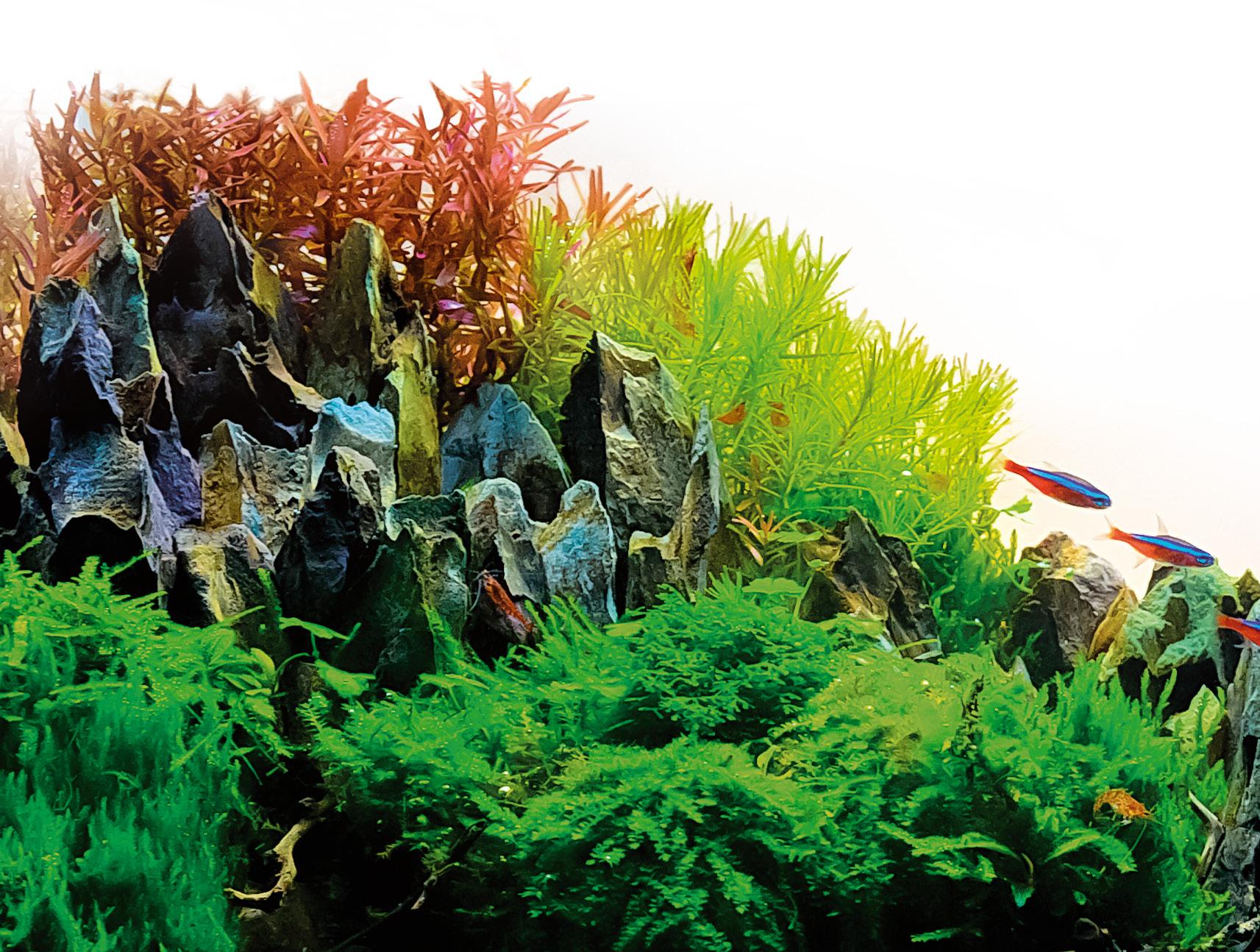
Aquarium tests
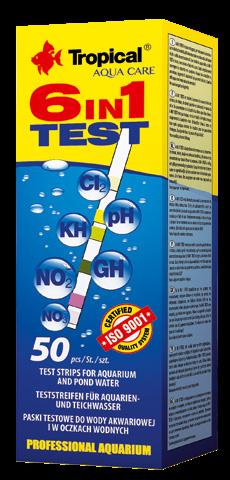

TEST 6 IN 1
strip test designed to measure nitrate, nitrite, total and carbonate hardness, pH and total chlorine concentration in fresh water safe, non-toxic and simple to use – simply dip the strip in the sample of water to be tested and after a moment read the results for six chemical parameters in case of emergency quick information about chemical parameters allows for immediate action to be taken in order to improve fish’s living conditions
TEST pH 6.0-7.8
test is intended for measuring the pH level of fresh water within the range 6.0-7.8 pH at intervals of 0.2 pH
high precision allows for obtaining very accurate results, which is particularly important for breeders of delicate species of fish, whose spawning depends upon exact levels of pH
Test pH 6.0-7.8 allows for close control of pH while adjusting its level in tanks populated with live organisms
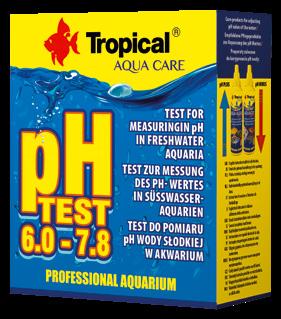

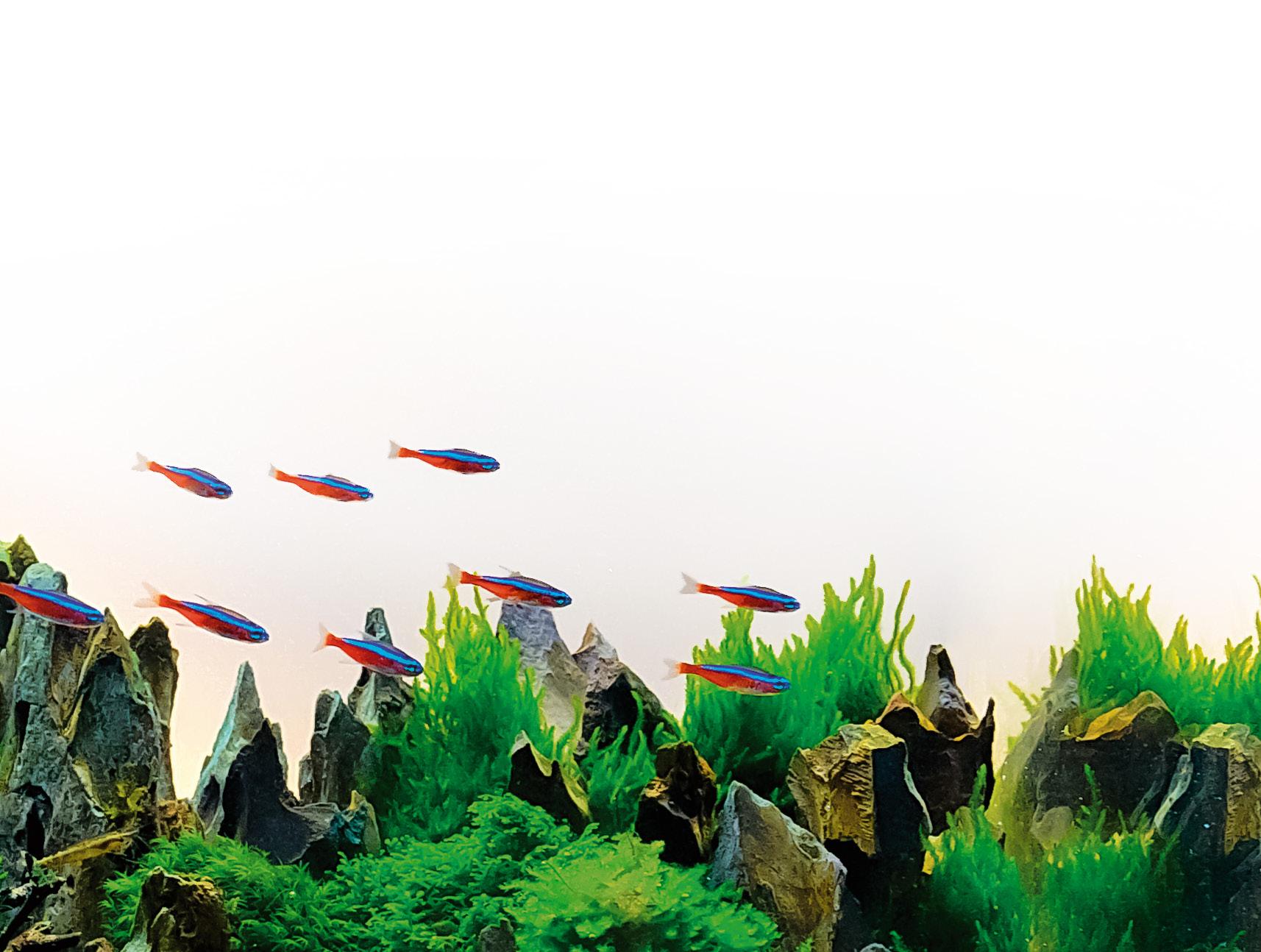
TEST GH/KH

test designed to measure by titration the general hardness (GH) and carbonate hardness (KH) of water in aquariums and ponds convenient and extremely easy to use you just add the solution of a proper agent into the water drop by drop until the color of the sample changes one drop corresponds to one German degree (°n)

TEST NO3 -


test is intended for measuring the concentration of nitrate (NO 3 - ) within the range 0 – 100 mg/l in fresh and salt water convenient and extremely easy to use the reagents are added to the water and after a short time cause discoloration of the sample
the nitrate concentration is obtained by comparing the colour of the sample with the enclosed colour scale

TEST NO2 -
test is intended for measuring the concentration of nitrite (NO 2 - ) within the range 0-3.3 mg/l in fresh and salt water convenient and extremely easy to use the reagents are simply added to the water and after a short time cause discoloration of the sample
the result is obtained by comparing the colour of the sample with the enclosed colour scale in the aquarium, nitrite is produced during the bacterial breakdown of fish wastes, uneaten food, and other organic substances because nitrite is highly toxic to fish, its concentration in the aquarium should be as close to zero as possible
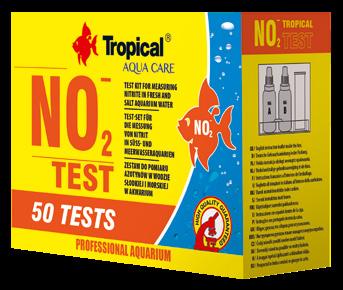
Guppies (Poecilia reticulata)
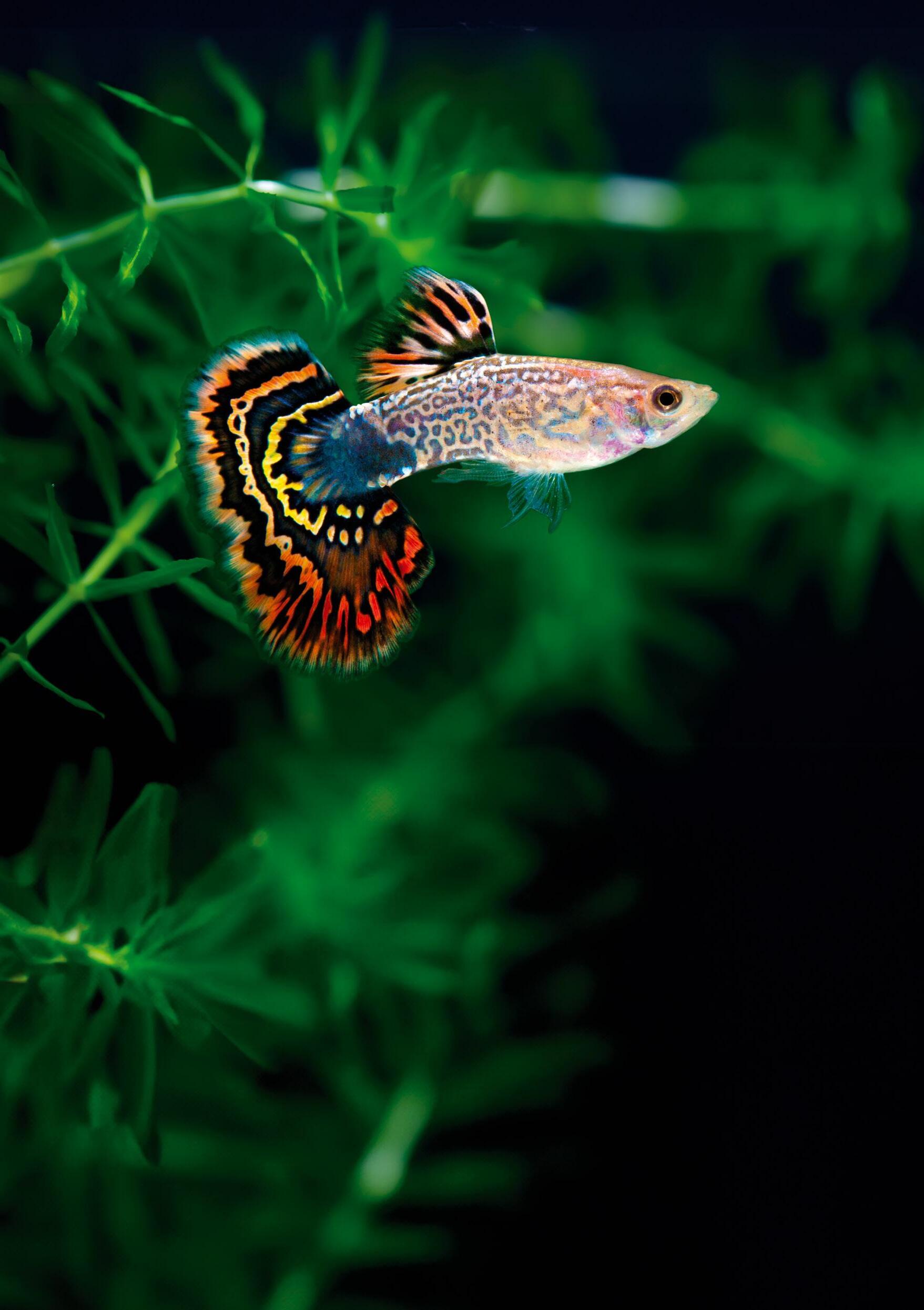
various fin colors and shapes are the result of breeding selection the female stores the semen of males, so she can give birth to several litters after a single copulation guppies are ovoviviparous
min. 50 liters about 3 years 6.5-7.5 pH 8-16°n roots,
larger than recommended for a given tank size 22-28°C peaceful fish of similar size 6 cm 5 cm Diet Size Aquarium size Approximate lifespan pH of the water General hardness Decorations Filter Temperature Companionship
omnivorous fish, small aquatic invertebrates, algae, special foods for guppies
stones
Guppies (Poecilia reticulata) were scientifically described by Wilhelm Peters in 1859, when a few live specimens were brought to the Natural History Museum in Berlin. Where did the common name “guppy”, recognized among aquarists around the world, come from? Well, a few years later, similar fish arrived at the British Museum in London, where they were studied by prominent ichthyologist Albert C. Günther. He concluded that it was a different species from P. reticulata and gave it the name Girardinus guppii in honor of Robert John Lechmere Guppy, who brought the fish to London from Trinidad. Interestingly, due to the wide variation in coloration, guppies were also classified under other Latin names. In the end, however, it turned out that all these fish belonged to a single species, for which the valid scientific name since 1963 has been Poecilia reticulata. However, the common name “guppy” has stuck to this species ever since.
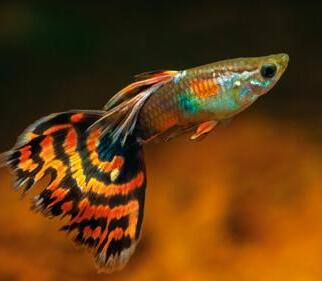

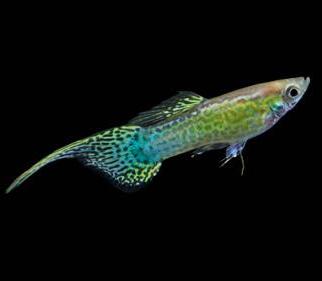
Habitat
In the wild guppies live in South American waters, north of the Amazon River (Guyana, Venezuela, Northern Brazil) and on the islands of Trinidad and Barbados. They are also observed in Central American waters, as well as in Australia, Asia and Europe, where it has been introduced. They inhabit small rivers, streams, ponds and even ditches. Thanks to its high flexibility regarding the physical and chemical parameters of water, it can be found even in heavily polluted waters.
Varieties
Aquarium guppies are farmed fish that differ in coloration and fin shape. Clubs of breeders from more than 20 countries are affiliated with Internationales Kuratorium Guppy Hochzucht (IKGH). At the national and international competitions they organize, guppies are judged according to the guidelines of the International High-Breeding Standard (IHS). Currently, the IKGH recognizes 13 guppy standards classified into three groups: long tail, sword tail and short tail.

Learn more: Varieties of guppies

Sexual dimorphism and reproduction
Females are silver-olive in color and larger than males. In sexually mature females you will notice a distinctly rounded abdominal area. In contrast, the much smaller males are extremely colorful and have a gonopodium. It is a copulatory organ that developed from the transformation of the anal fin. With it, the male introduces sperm into the female’s reproductive tract, where the eggs are fertilized. Guppies are ovoviviparous species. This means that embryos develop in eggs in the female’s reproductive tract. When the young hatch from the eggs, they are delivered. Pregnancy lasts an average of 30 days. During this time, you can observe how the female’s belly rounds out and how the so-called pregnancy spot, visible above the anal fin, enlarges and darkens. Adult fish usually eat their offspring. Therefore, if you want to raise the young, you need to use a special mesh isolation box or place the female in another aquarium for the duration of the birth. In a general aquarium, the young will survive if there are plenty of plants, including floating plants.
Long tail
Short tail
Sword tail

How to set up an aquarium for guppies?
The size of the aquarium and its equipment
The minimum aquarium capacity for a small group of fish is 50-60 liters. The decor of the aquarium is not important. What is important is that the tank has a swimming area and a planted zone. It also must be equipped with a heater and efficient filtration. We recommend buying filter designed for a larger tank. Guppies like oxygenated water, so use aerator as well. Decorate the tank with roots and stones. It’s also a good idea to stick the background, preferably black or blue, to the back wall of the aquarium. It will make the tank more appealing.
The substrate
As a substrate, use fine gravel that does not affect the chemical parameters of the water. If you want to encourage plant growth, consider using a special substrate that is placed under the gravel. It is a source of nutrients for plants.
Plants

The aquarium with guppies should be densely planted with plants. You can choose epiphytic species (microsorum, anubias, bolbitis), which are not planted in the substrate but attached to roots or stones or cryptocorynes, vallis and lesser water-plantains. In the case of the latter, use a thicker layer of substrate (at least 5 cm), as these plants produce a strong root system. You can also plant waterweeds, water primrose and bacopas. Plants with delicate foliage, such as water milfoil or cabomba, can be nibbled on by guppies, which thus diversify their diet. Be sure to use floating plants, such as floating crystalwort or spongeplant, which will provide shelter for young fish. To enjoy beautiful plants, ensure proper fertilization with Tropical Aquaflorin Potassium and Tropical Ferro-Aktiv. Once the plants are planted, don’t expect spectacular results right away. They are living organisms. They need time to acclimate.
Water parameters for guppies
Guppies are pretty flexible when it comes to chemical parameters of water, provided that they are gradually accustomed to them. It is best to keep the water pH in the aquarium between 6.5-7.5 pH, and the total hardness at 8-16°n or higher. Breeders also recommend the addition of sea salt at 0.5 g/l of water. The water temperature should be in the range of 22-28°C. You can check the basic chemical parameters of water with the Tropical 6 in 1 Test strip test or drop tests: Tropical NO 2 - Test , Tropical NO 3 - Test , Tropical GH/KH Test and Tropical pH Test 6,0-7,8
The number of fish in a tank
For an aquarium of 50-60 liters, it is best to buy a group of fish consisting of 2 males and 4 females of the chosen variety. The fish will reproduce quickly.
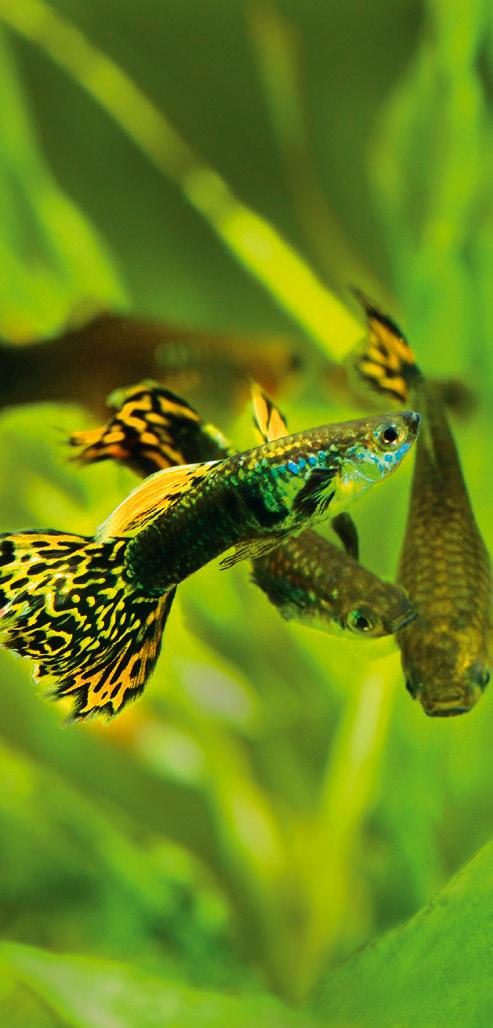
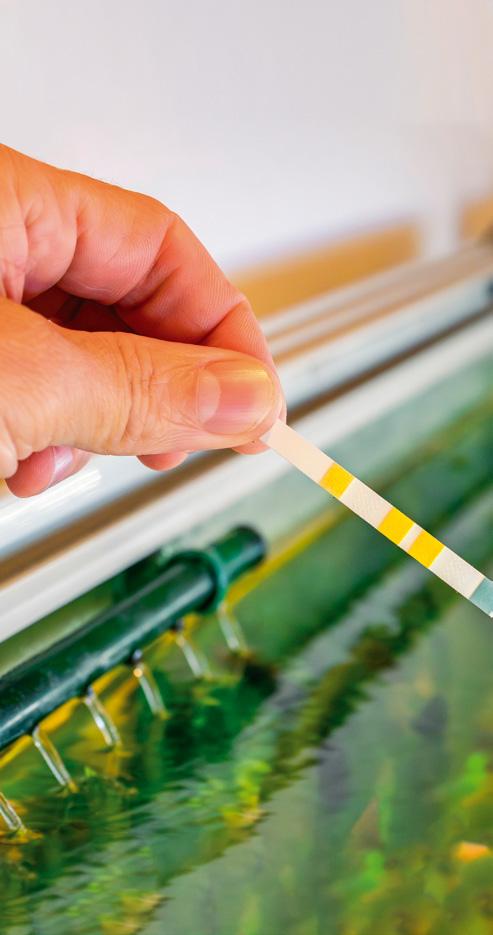
Aquarium care
In a mature aquarium, 30% of the water in the tank should be changed every week. The smaller the aquarium, the more likely that water parameters will deteriorate faster and more frequent water changes will be needed. Every tank is different, so you need to work out the frequency of water changes on your own, controlling the concentration of nitrates in the water. Treat water for water changes with Tropical Supreme and use Tropical Bacto-Active and Tropical Nitri-Active with bacteria.
Companionship for guppies
Guppies can be kept with other fish of similar size and gentle disposition, such as: Corydoras, Loricariids, small species of rasboras, danios and other livebearers. Fast, active fish, such as Tiger barbs, are not a good choice, especially since they can bite the fins of guppies. Angelfish or other larger cichlids will treat young fish as a snack.
Foods for guppies
Guppies are omnivorous fish which eat insect larvae, small crustaceans and algae in the wild. In the aquarium, feed them specially composed flake food Tropical Guppy or the universal foods recommended below. It is necessary to supplement their diet with algae-enriched foods, and to increase their immunity by providing foods with garlic and probiotic. Adult fish should be fed 1-2 times a day in small portions. You can feed young fish with crushed flake foods or use powdered foods, such as Tropical Micro-vit Basic and Tropical Pro Defence Mikro Size

Guppy

Learn more: About fish nutrition

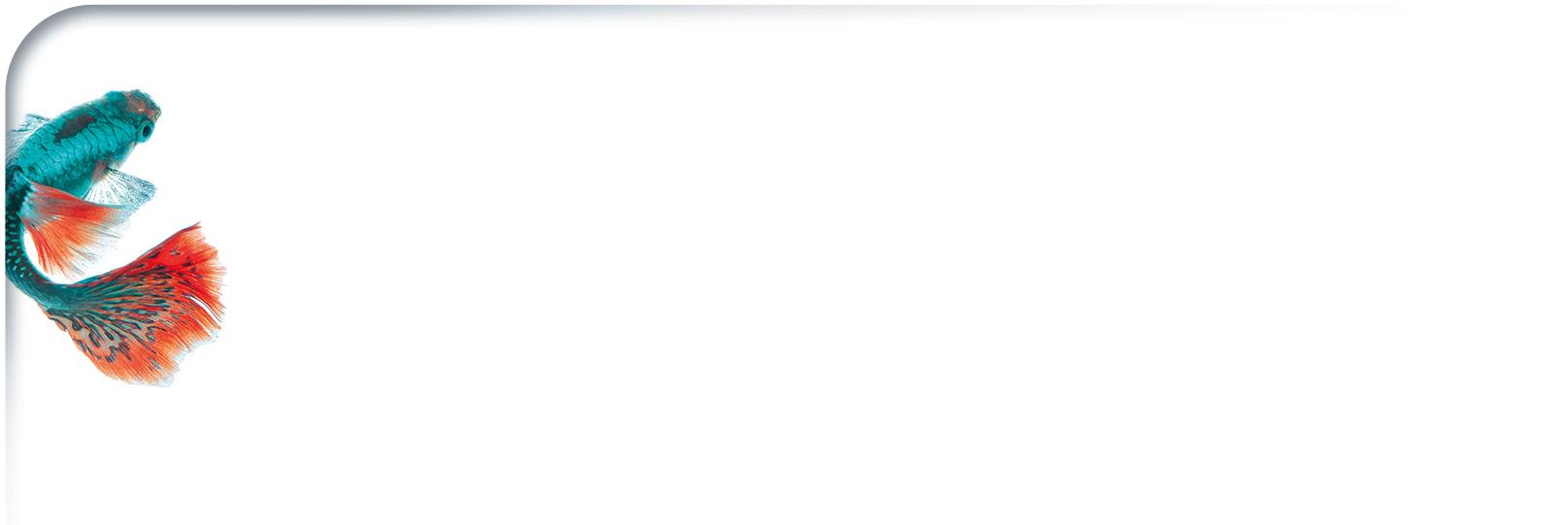
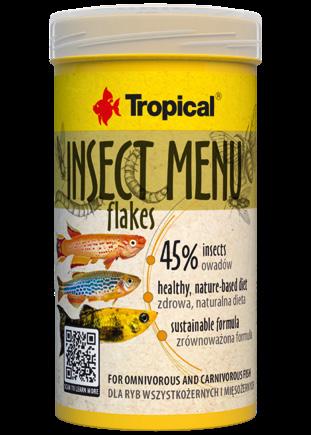
basic food in the form of flakes for guppies and other livebearing fish if fed regularly, it ensures proper growth and development natural marine salt supplement enhances fish’s condition and positively affects pregnancy a considerable amount of plant material, including spirulina, regulates digestive processes
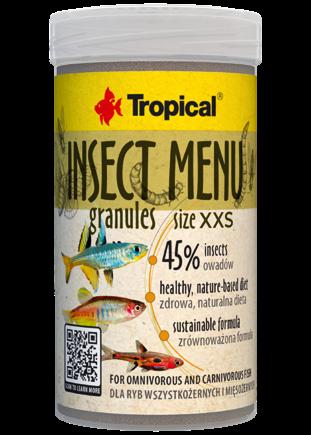
Insect Menu Flakes
Insect Menu Granules size XXS
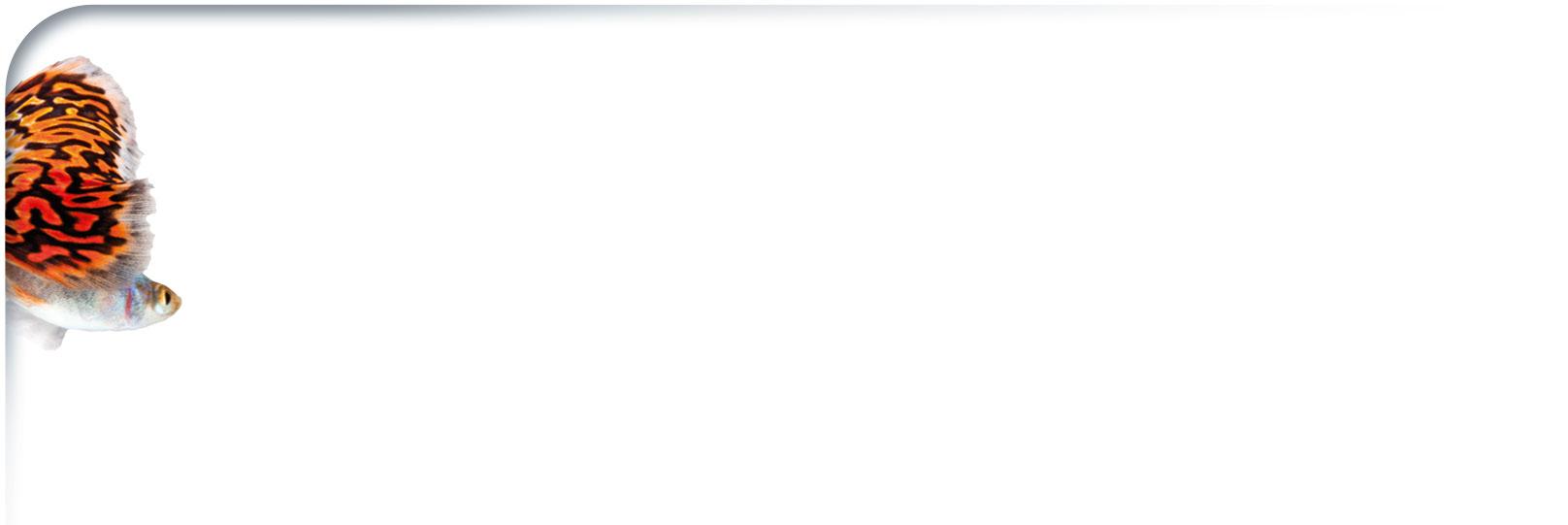
multi-ingredient food based on 3 insects: black soldier fly (15%), silkworm (15%) and mealworm (15%), for omnivorous and carnivorous fish contains only highly digestible insect protein, which stimulates the growth of probiotic lactic acid bacteria, resulting in better digestion, faster growth and greater immunity of fish high fat content, including Omega-3 and Omega-6 fatty acids, is a source of energy for fish and supports skin function
significant content of chitin from insects activates immune cells and supports natural intestinal bacterial flora

Learn more: Insects in fish nutrition

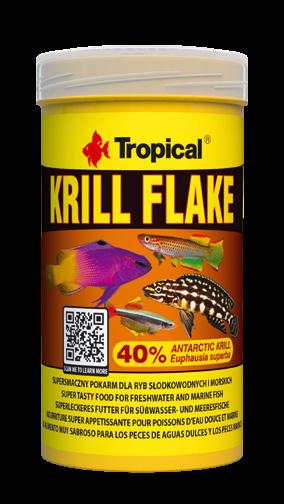
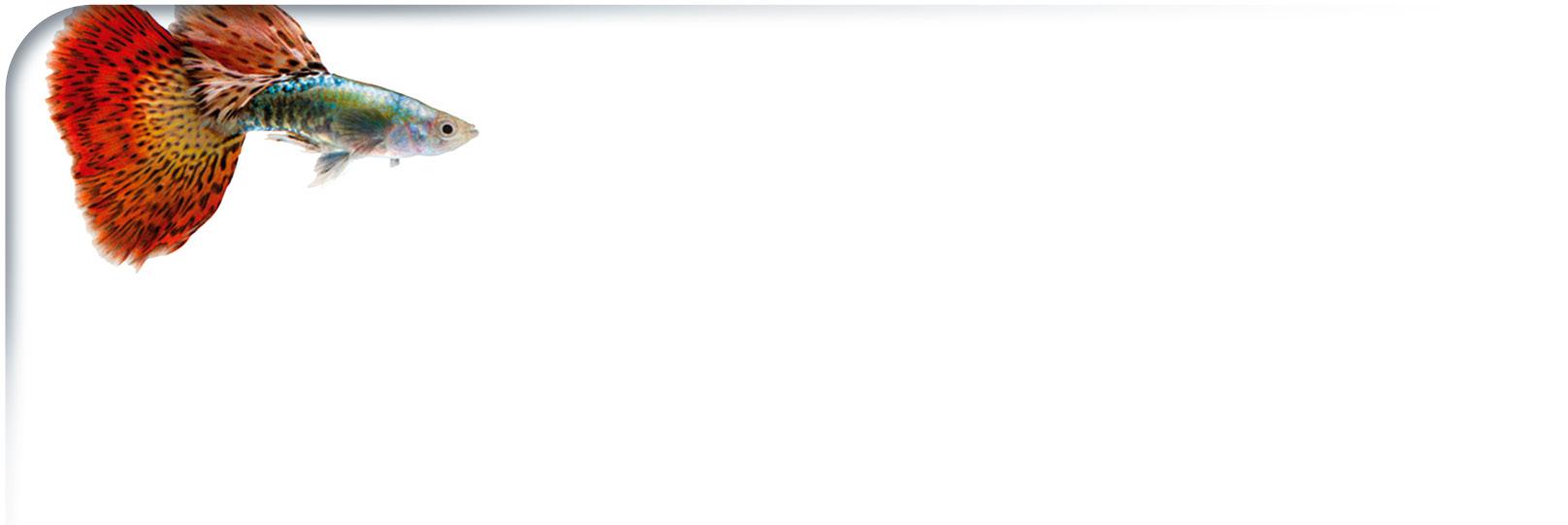
America size S
Krill Flake
colour-enhancing food in the form of flakes with high content (40%) of krill for everyday feeding of omnivorous and carnivorous fish
krill is the source of valuable proteins, amino acids, chitin, unsaturated fatty acids, including Omega-3, and natural carotenoids
high content of carotenoids, including astaxanthin, enhances beautiful, intense coloration
soft sinking food in the form of sticks for omnivorous and carnivorous North and South American fish
complete protein from herring and insects ensure optimum growth
intensifies fish’s coloration thanks to the high content of carotenoids from krill, calanus and red pepper
garlic and beta-glucan improve fish’s immunity
fibre (from fruit among other sources) and chitin from crustaceans regulate digestion
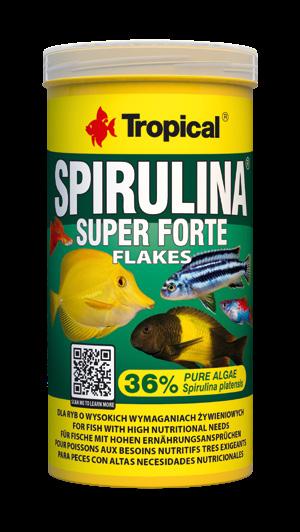
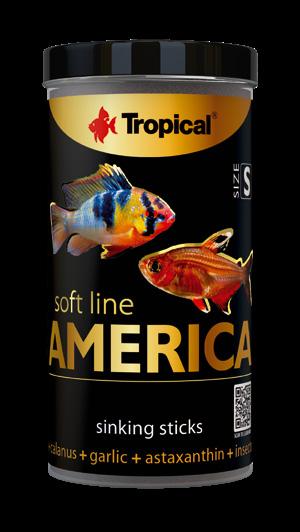


Super Spirulina Forte
food in the form of flakes with high (36%) content of spirulina improves fish’s immunity and regulates digestion
a source of unsaturated fatty acids (HUFA), easily assimilable protein, vitamins and trace elements, which ensure excellent condition of your fish
natural carotenoids ensure beautiful intense coloration

Learn more:
Algae in fish nutrition
3-Algae Flakes
food in the form of flakes with algae and aloe vera contains three algae: chlorella (Chlorella vulgaris), Ascophyllum nodosum and Laminaria digitata, the last two referred to as kelp algae
unsaturated fatty acids, proteins and vitamins from chlorella, together with macronutrients and trace elements from kelp algae ensure excellent condition, intensive growth and vitality in fish
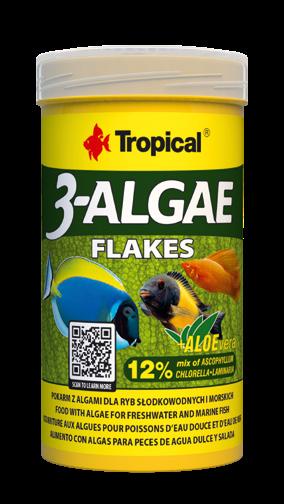

high-dose of chlorophyll from chlorella inhibits the development of unwanted bacteria in alimentary tract, preventing infections
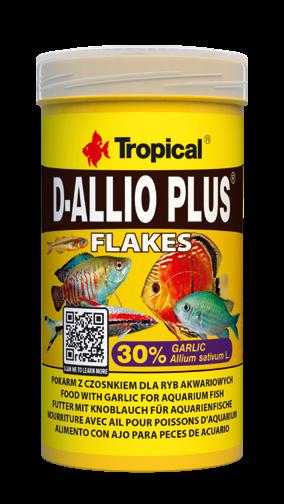
Tropical D-Allio Plus
strengthening food in the form of flakes with garlic for all aquarium fish
garlic enhances immunity and regulates digestion
high nutritional value, optimally balanced vitamins and trace elements, together with the properties of garlic, make Tropical D-Allio Plus an indispensable food for fish adapting to new conditions or undergoing medical treatment

Pro Defence size XXS
hi-protein (57%) micro granules (0.5 mm) with probiotic for everyday feeding of fry and small species of fish probiotic added to the food contains viable Bacillus subtilis endospores, which stabilize gut microflora, boosting fish resistance to pathogens and facilitating utilization of nutrients, which in turn accelerates fish’s growth and reduces contamination of water with fish’s feces
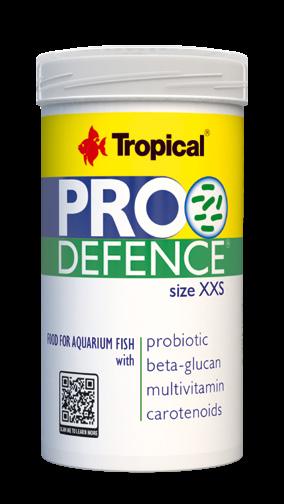

the synergic effect of probiotic, beta-glucan, vitamins and carotenoids significantly enhances the immune system of fry and adult fish, increasing their resistance to pathogens
probiotic positively influences reproduction and alleviates stress caused by transportation, spawning, intra-species aggression, rivalry etc.


Mikro-vit Basic
Mikro-vit Spirulina
multi-ingredient food with the addition of spirulina (6%) for fry meets high nutritional requirements of young fish, e.g. live bearing fish, with a high demand for plant material
basic food for the fry with spirulina, krill and squid
the ingredient-rich formula of top quality plant and animal material, together with optimally balanced vitamins and trace elements, stimulates growth and development in small fish and prevents vitamin and trace element deficiency, which may cause irreparable damages




Mikro-vit Hi-Protein
high-protein food for the fry with highly nutritional egg yolk meets all the dietary requirements of small fish, stimulating their growth and development
Pro Defence Micro size
hi-protein (60%) powder with probiotic for everyday feeding of the fry probiotic added to the food contains viable Bacillus subtilis endospores, which stabilize gut microflora, boosting fish resistance to pathogens and facilitating utilization of nutrients, which in turn accelerates fish’s growth and reduces contamination of water with fish’s feces
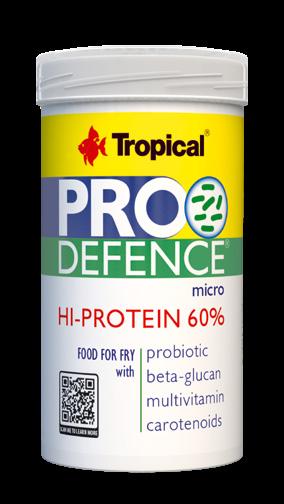

the synergic effect of probiotic, beta-glucan, vitamins and carotenoids significantly enhances the immune system of the fry, increasing its resistance to pathogens probiotic increases the survival rate of the fry and its resistance to stress high content of protein, including essential amino acids, ensures healthy growth and development of fish
properly selected vitamins, macronutrients and trace elements prevent avitaminosis, rickets and support organ and bone development

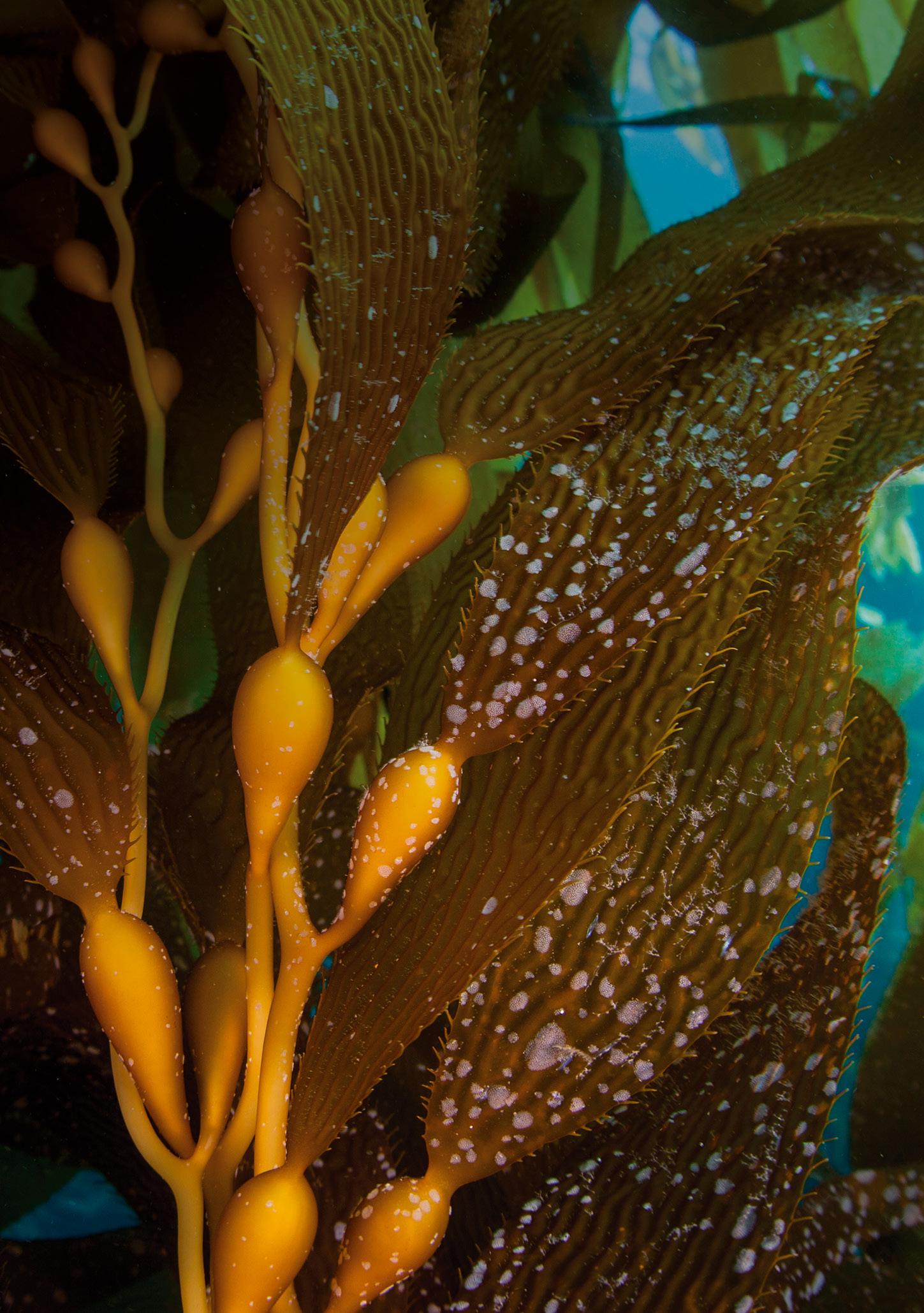
The riches of nature in Tropical foods
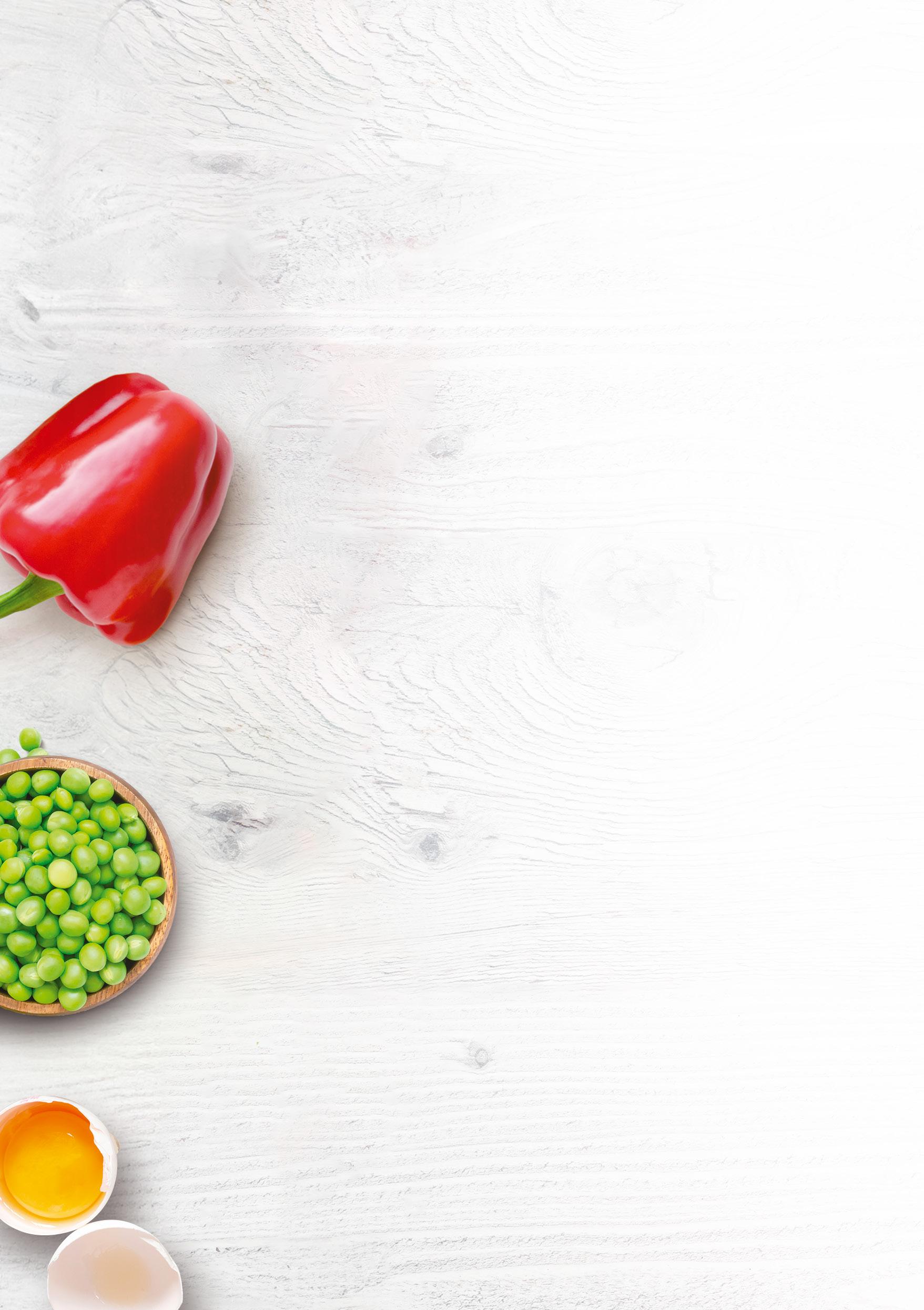
To enjoy healthy and active fish presenting splendid coloration one main condition must be met – a diversified diet based on high-quality foods. For the production of our foods we use more than 100 various raw materials. Each product contains minimum 20 ingredients which ensure food’s unique properties. Such a great number of raw materials used for fish food production corresponds with a wide variety of foods which fish have at their disposal in their natural environment. This way we can be sure that we provide fish with all essential nutrients. In addition, we have ensured optimal phosphorus levels in our foods. This covers the fish’s need for this element but at the same time reduces the amount of phosphorus excreted with the feces, which in effect reduces the influence of the food on algal blooms in the aquarium.
Selected natural ingredients in Tropical foods:
Red pepper is the source of carotenoids which enhance coloration in fish, improve their condition, maturation, reproduction and increase the resistance to diseases.
Algae used in Tropical foods are the source of high quality protein, macronutrients and trace elements, carotenoids and natural immune stimulators. They facilitate digestion, prevent inflammatory disorders of alimentary tract, enhance coloration and improve immunity.
Calanus (Calanus finmarchicus) is a plankton crustacean derived from North Atlantic waters. It is the source of astaxanthin, protein, rich in essential amino acids, and unsaturated fatty acids, including Omega-3.
Squid are high in protein but low in fats. They provide polyunsaturated fatty acids, including EPA and DHA. They encourage fish to spawn.
Insect larvae are a source of very good quality protein, fat, including unsaturated fatty acids Omega-3, Omega-6 and Omega-9, and chitin, which is beneficial to the digestive tract of fish.
Krill, due to its high palatability, make the food very tasty and eagerly eaten by fish. Moreover, ingredients contained in krill encourage fish to spawn and intensify fish’s coloration.
Oak meal is one of the ingredients of Pleco’s Tablets for Loricariidae fish. For some species within this family wood is a crucial dietary component.
Nettle has bacteriostatic and detoxicating effect; if added to foods, it facilitates digestion.
Spinach is a rich source of easily assimilable macronutrients, trace elements and vitamins.
Green pea is the source of valuable protein, easily assimilable by the fish, and the fibre, which regulates digestion.
Egg yolks are rich in fats, easily assimilable lecithin and the number of vitamins and trace elements. They contain lutein – one of carotenoids, which intensifies coloration in fish. Food with egg yolk – due to high energy value – recommended mainly for adolescent fry and spawning pairs.
Improved immunity in fish
A number of ingredients, used in Tropical foods, enhance fish’s immunity. It is recommended to introduce at least one food containing immunity booster.
Aloe – aloe extract added to food improves immunity and facilitates digestion.
Beta-glucan is a natural immune stimulator derived from the yeasts’ walls. It activates white blood cells, increasing their potential for absorbing and destroying microbes which invade fish’s bodies.
Chlorella vulgaris is microalga with a high content of protein (45-57%) rich in essential amino acids and carotenoids (0.4%). It contains beta-glucan and particularly high content of chlorophyll (2%), which facilitates digestion, reduces the number of decay bacteria in the gastrointestinal tract, acts as an antioxidant and helps to detoxicate.
Garlic (Allium sativum) contains sulphur compounds which have strong bactericidal properties. Helps to fight parasites in the alimentary tract.
Kelp algae is a mixture of brown algae, out of which Tropical uses two – Ascophyllum nodosum and Laminaria digitata. Kelp algae are the rich source of micronutrients and trace elements, including organic iodine. They contain high percentage of unsaturated fatty acids and dietary fibre, which regulates digestion and protects the alimentary tract against development of unwanted bacterial flora. Some compounds found in Kelp algae have bactericidal and antiviral properties.
Carotenoids – natural pigments present in higher plants, algae and crustaceans. Apart from coloration enhancement, carotenoids improve fish’s overall condition and resistance to diseases. Tropical foods contain concentrated astaxanthin and beta-carotene derived from natural sources and raw materials rich in carotenoids: krill, spirulina, chlorella and red pepper.
Insect larvae – contain chitin, which has prebiotic properties, positively influencing the growth of lactic acid bacteria in the intestines of fish. In addition, insects contain extremely interesting substances that inhibit the growth of pathogens – antimicrobial proteins (AMP – antimicrobial peptides).
Unsaturated fatty acids (UFA), including Omega-3 and Omega-6 improve fish’s resistance to diseases, help to assimilate vitamins A, D, E and K, improve skin’s function as a protective barrier.
Probiotic – viable Bacillus subtilis endospores, which stabilize gut microflora, facilitating utilization of nutrients, improving immunity and overall health and condition.
Spirulina (Arthrospira platensis) is microalga known for its high content of protein (60-65%) rich in essential amino acids. It is the source of chlorophyll, carotenoids, unsaturated fatty acids and natural immune stimulators. Thanks to these substances spirulina enhances the immune system.
Learn more: Spirulina

Food with probiotic



How to choose the right fish food?
1. Check dietary requirements of species you wish to keep in available literature.
2. Choose the size and form of the food.
Fish in the wild live in specific parts of the reservoir. Some live near the bottom, some in the middle layers of water and some among the plants. Other species prefer regions under the surface of water. Particular zone can be usually guessed on the basis of the shape of fish’s body and the placement of its mouth. This makes selecting proper form of food much easier.
Thanks to the availability of various forms one can perfectly match proper product to a given species, taking into account food size and the place and way of feeding.
Flakes
Most universal form of food. Suitable for fish living in all parts of the reservoir. Thanks to their delicate structure they float when coming into contact with water and then slowly sink. Floating all over the tank, they allow all species, even less energetic and the ones lower in the hierarchy, to feed. You can crumble them in case you need smaller bites.
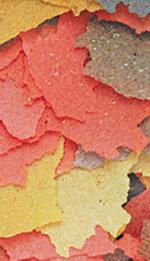
Placement of the mouth Zone of feeding Form of the food upper surface of the water flakes, pellets, sticks, dried and freeze-dried foods medium middle layers of water granules, chips, flakes, adhesive tablets, plano-convex tablets lower bottom of the tank adhesive tablets, sinking tablets, plano-convex tablets, wafers, granules, flakes
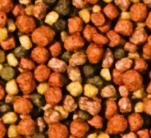
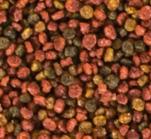
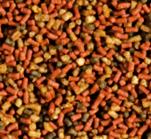
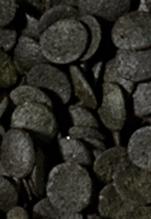
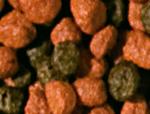

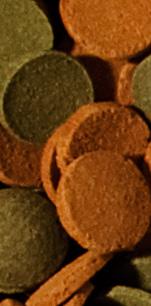
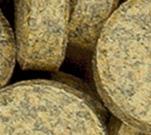

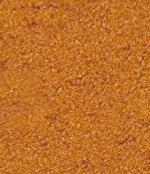

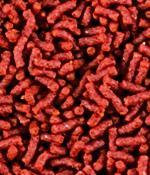
Granules
Concentrated dose of food in the form of granules of various sizes: granules (1.4-6.0 mm), mini granules (0.8-1.2 mm) and micro granules (0.5-0.7 mm). They are sinking and slowly sinking foods. Suitable for fish eating in the middle layers of water and at the bottom. Most granules have even surface. Thanks to their closed pores they slowly absorb water, hence do not disintegrate in water, which limits the release of valuable ingredients. Tropical offers also includes the so called “bites” granules, which have uneven surface and soften quicker, hence provide perfect feeding solution for sensitive fish and the ones which are not particularly keen to eat granules.
Chips
Type of granules which resemble flat disk. They sink quickly but do not disintegrate in water. Intended mostly for large species of fish. Served to smaller fish, it is nibbled and bitten piece by piece, which limits the phenomenon of fast swallowing of small granules by particularly voracious fish.
Pellets and sticks
Floating foods for medium and large fish which feed at the surface of water. Pellets in the shape of balls are available in size S (3.5 mm) and M (5-6 mm). Sticks are available in size M (4 mm) and L (6 mm).
Wafers (discs)
This food is dedicated to feeding fish that live near the bottom and crustaceans. Wafers rapidly fall onto the bottom, which helps to place them exactly in bottom feeders’ favourite spots or directly into the hiding place of timid species. Wafers absorb the water slowly, hence maintain their shape in the tank. Their shape and structure allow Loricariidae fish to use their suckermouths and teeth the way they do in the wild and feed by scraping food from various surfaces.
Tablets
Foods in the form of tablets are recommended for feeding bottom feeding fish, crustaceans (sinking tablets, adhesive and plano-convex) and fish that live in the middle layers of water, including the fry (adhesive tablets and plano-convex). Adhesive and plano-convex tablets should be adhered to the glass of the tank. All tablets fall into tiny parts in the water.
Micronised foods
Foods in the form of fine powder intended for feeding the fry. In case of big fry, for instance of live-bearing fish, micronised foods may be used from the moment young fish start to feed.
Natural foods
Dried or freeze-dried invertebrates (Daphnia, Gammarus, artemia, bloodworms, Tubifex, shrimps) rich in chitin and carotenoids. Biologically safe. Perfectly supplement ornamental fish’s diet.
Soft foods
Foods in the form of various soft granules obtained through advanced and innovative production technology. Thanks to their soft texture they are more readily accepted and digested by fish.

A SAFE ALTERNATIVE TO LIVE BLOODWORM


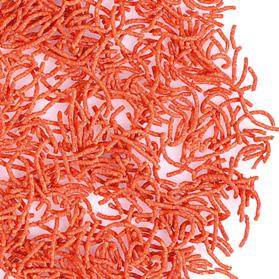
Discover slow-sinking microsticks with a diameter of 0.4 mm
A new form of food for small fish species
imitates bloodworm encourages fish to feed enhances coloration
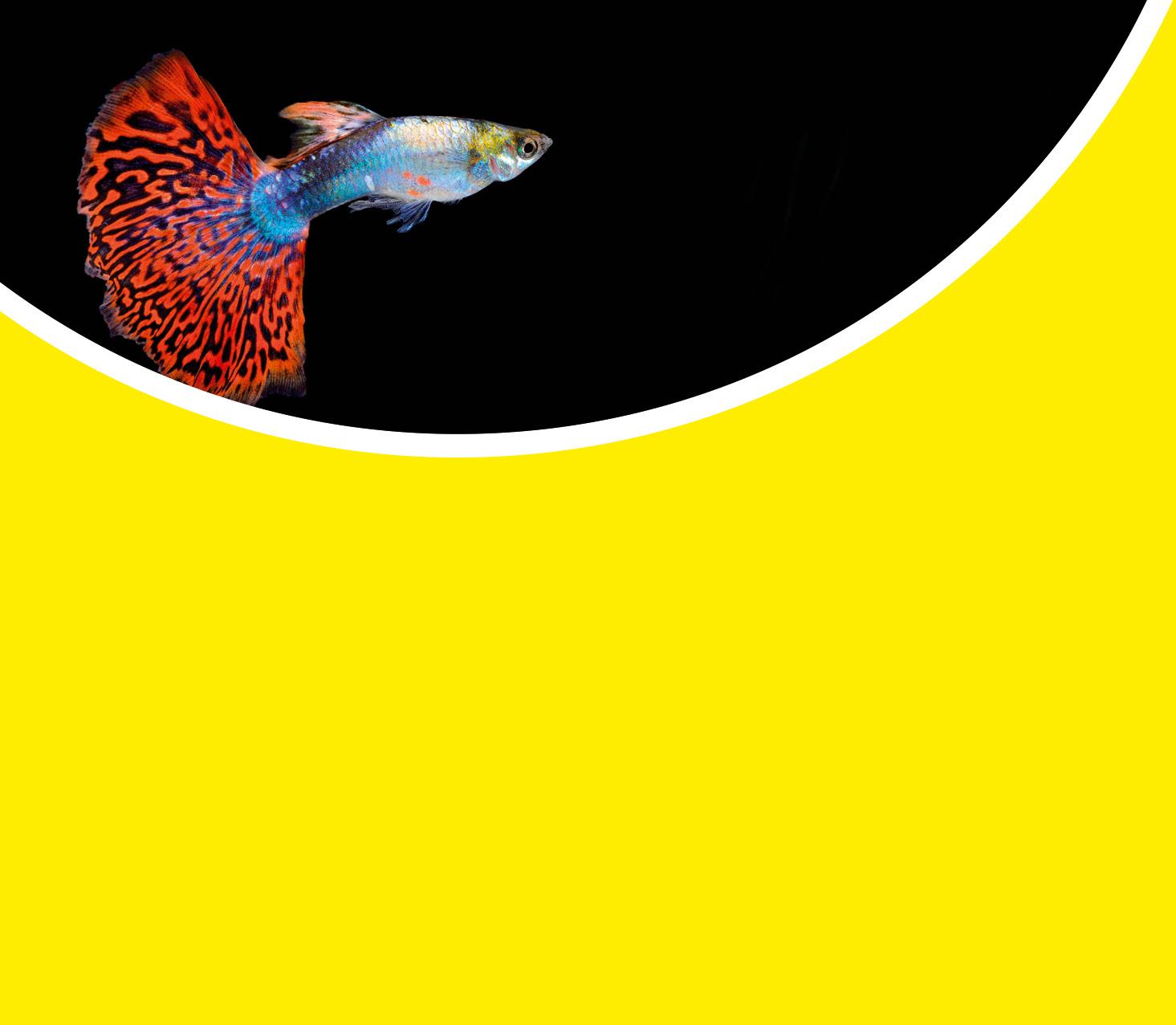
The address of your shop:
TROPICAL Tadeusz Ogrodnik
ul. Opolska 25, PL 41-500 Chorzów
www.tropical.pl
Information materials 04.2024, code: P1112ENG –text by Aleksandra Kwaśniak-Płacheta PhD Wersja: 01 © –TROPICAL T. Ogrodnik 2024



























































































